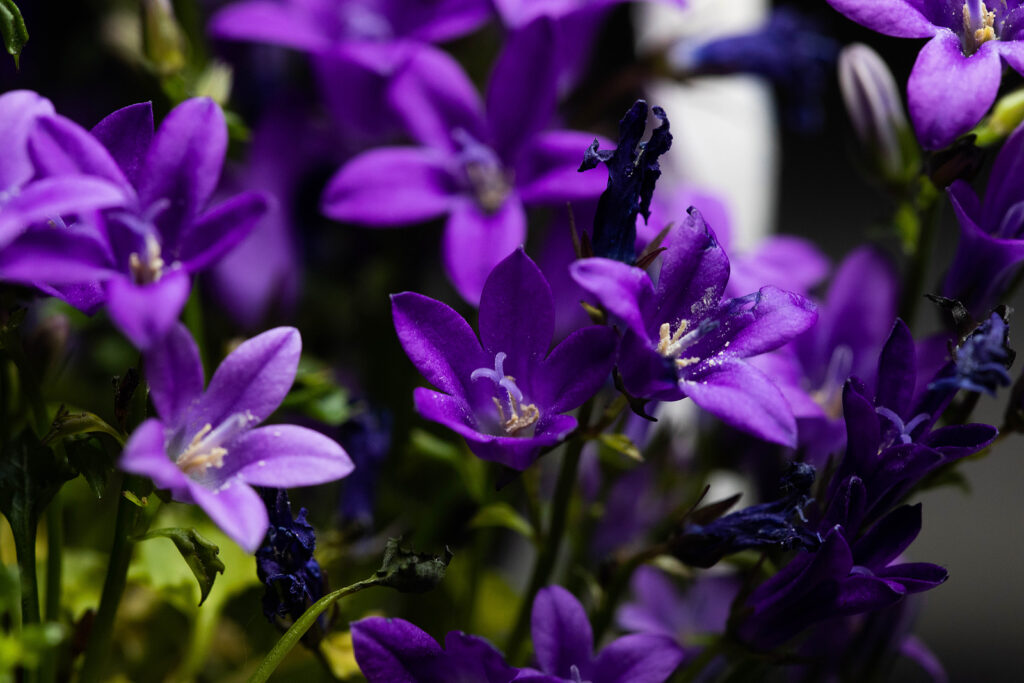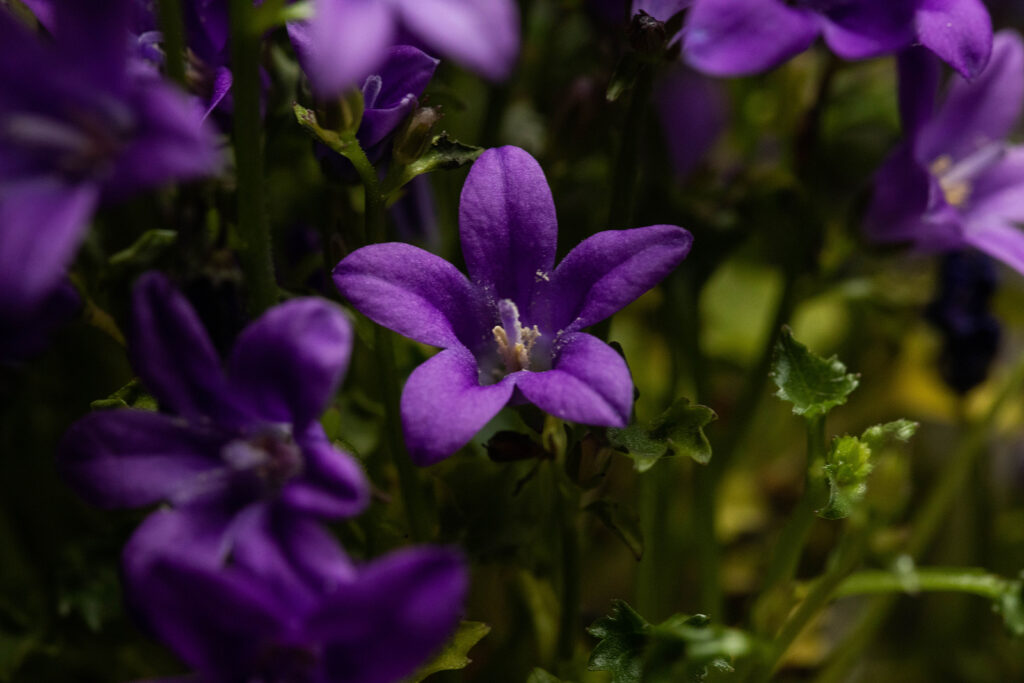Triteleia is a spring-blooming cormous perennial grown for its umbels of funnel-shaped flowers that appear above leafless stems. The semi-erect, narrowly linear leaves usually die away by the time the plant flowers. Triteleia’s common name is Triteleias.
Triteleia is a good choice for planting in a warm, sunny spring border or bed. In cold-winter regions it is best planted in a greenhouse or grown indoors for its spring blooms.
Triteleia were formerly known under the botanical name Brodiaea. There are about 15 species in the genus. All are native to grassland, chaparral, and pine woodland in the western United States.

Get to know Triteleia
- Plant type: Bulb (corm)
- Growing zones and range: Zones 9 to 10; grown elsewhere as annual.
- Hardiness: Hardy to Zone 9
- Height and width: To 24 inches (61cm) tall and 6 inches (15cm) wide
- Foliage: The leaves are basal and grassy or linear and generally die back as the flowers appear, leaving behind leafless stalks.
- Flowers: Small, showy, umbels of bowl-shaped, blue or white flowers; flowers are borne on individual stalks and have six petal-like tepals; the tepals are joined at the base to form a short tube.
- Bloom time: Summer.
- Uses: Naturalizing in the West; containers, rock gardens, or raised beds in the North.
- Garden companions: White China asters (Callistephus chinensis)
- Common name: Triteleias
- Botanical name: Triteleia
- Family name: Liliaceae
- Origin: Pine woodlands in western United States
Where to plant Triteleia
- Plant Triteleia in full sun.
- Triteleia prefer the dry conditions of the Pacific and southern states and do poorly in the humid Northeast.
- Plant Triteleia in rich soil. Light, sandy loam is ideal.
- Work sand or grit into the soil to improve drainage.
When to plant Triteleia
- Plant Triteleia corms in spring.

Planting and spacing Triteleia
- Plant Triteleia 3-5 inches (7.6-12.7cm) apart and deep.
- Triteleia are most effective planted in drifts or clumps with fairly close spacing.
- Since Triteleia foliage often is dying back when the plants are flowering; plant shallow-rooted annuals to fill in around them.
How to water and feed Triteleia
- Triteleia require even moisture when actively growing, but once plant goes dormant in summer, they require warm, dry conditions.
How to care for Triteleia
- Where marginally hardy, look for a protected, south-facing site for Triteleia and cover over winter with a loose mulch of evergreen branches, pine needles, or salt hay.
- In the North, move container plants of Triteleia to a warm, dry site protected from rain to ensure a dry dormancy.
- Overwinter container-grown plants indoors in a cool—40-45° Fahrenheit (4-7°C)—dry spot, then repeat the cycle in spring.
Triteleia pests and diseases
- Triteleia can develop rust.
- Triteleia have few pest problems.
Triteleia propagation
- Separate Triteleia corns after blooming, just as the plants go dormant.
- Sow seed as soon as they are ripe in early spring; seed-sown Triteleia takes 3 to 5 years to reach maturity.
Triteleia varieties to grow
- Triteleia hyacinthina, Wild hyacinth (formerly Brodiaea hyacinthine, B. lactea), has 4 inches (10.2cm) wide umbels of 20 or more .5 inch (1.3cm) long blue, lilac, or white flowers on 30 inches (76.2cm) tall stems in late spring or early summer. Zones 7 to 10.
- T. ixioides, Pretty Face, Golden Star (formerly Brodiaea ixioides, B. lutea), a 2 feet (.6m) tall species bearing 5 inches (12.7cm) wide umbles of 20 to 25.5 to 1 inch (2.5cm) wide flowers in early summer. Flowers are yellow with a purple stripe down the center of each tepal. Zones 7 to 10.
- T. laxa, Triplet lily, grass nut, Ithuriel’s Spear, has trumpet-shaped flowers that are usually blue, but sometimes violet or white. 30 inches (76.2cm) tall. ‘Queen Fabiola’, a deep blue, is one of the best cultivars. It grows to only 1 foot (.3m) tall. Zones 6 to 10; to Zone 5 with winter protection.
- T. tubergenii, flower stalks to 2.5 feet (.8m) tall; light blue flowers.















